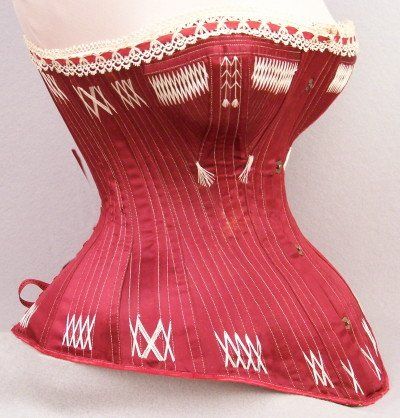Pooches Are Period! — The Victorian Belly Curve in Art & Real Life
Let’s talk bodies, shall we? Specifically, Victorian bellies. Body image is a sensitive topic that can’t be adequately covered in a simple blog post, but the goal of this article is to challenge the myth that Victorian corsetry is intended to flatten the stomach while cinching the waist. In fact, corsetry was and is more about smoothing, shaping, and supporting the body. The corset’s purpose was to redistribute the body’s proportions and, along with strategic padding, create the illusion of the fashionable shape for a specific period.
In a wide variety of Victorian images, you can see that while the fashions changed from the decade to decade, the lower stomach in stays or corsets remained a soft, rounded curve for much of the 1800s. For the sake of brevity, this article will focus mainly on the late 1860s to the 1890s. It’s also important to remember that people have always come in all shapes and sizes, and these images represent a just small fraction of them.
Nana by Edouard Manet, 1877, Kunsthalle Hamburg
A well-known and particularly lovely portrait by Manet is the perfect example of the late-Victorian ideal. Painted in 1877, Nana shows a woman, most likely a courtesan, standing in front of a mirror in a chemise and pale blue corset, and the profile perspective clearly shows the pronounced curves of her body.
1870s Trade Card, Boston Public Library
1870s Trade Card, Boston Public Library
1870–1900 Trade Card, Boston Public Library
While Manet’s painting is thought to represent a woman of the demi-mode, similar shapes are also be seen in corset advertisements marketed to average women of the time. One of the most charming aspects of these advertisements is they show the range of corset models manufactured for a variety of figures. One corset did not fit all.
1890–91 H. O'Neills Fall & Winter Catalog
Additionally, patents of the period perfectly illustrate how corsets were molded to the curves of women’s bodies using complicated pattern designs. The corset was specifically cut to accommodate not only the bust, but the flare of the belly and hips as well, supporting the form and creating a fashionable silhouette.
1883 C. M. A. Barry Corset Patent
Moving from idealized illustrations to 3-D garments, you can also see a variety of shaping techniques by examining extant corsets. From the front, the corset appears flat but when viewed in profile, it’s clear how the curve was built into the structure of the garment.

1881–82 French Wedding Corset, MET Museum, 2009.300.3041a–c

1885–87 American Corset, MET Museum, 2009.300.3497a–c

1879 Patent-Dated Silk Corset, Time Travelers Estate Sales

1890s American Corset, MET Museum, C.I.41.38.5a, b

1860–70 British Corset, Manchester Art Gallery, 1947.1629
Looking at photographs from the late 1800s, a rounded belly can be seen on real women, too. The angle of the curve varies with each individual body and with each specific dress. These images feature tight-fitting garments to better illustrate this point, but one can still find this curved shape in other decades where the skirts were more voluminous.

Miss Ethel Bond, Notman Archives, Musée McCord, 1886

1880s Unknown Woman
1870s–1880s Unknown Woman
Wedding Photograph, 1889, AlaskaVintage, Etsy
Rosebud Denham, State Library and Archives of Florida Photographic Collection
It wasn’t until the turn of the century that the silhouette shifted to a flat front. Many contemporary advertisements for the S-bend corset emphasized this “new figure” with side-by-side comparisons.

1900 illustration depicting the "new" s-curve corset.

There is so much more to explore with this topic that this post could easily turn into a novel. However, hopefully these images have helped to normalize the idea that belly curves were not only common in Victorian corsetry, but desirable. And perhaps, when you go to create your next outfit, you may have a better appreciation for the fashionable ideal of the time and how that might translate to a real, live bodies.
Our own 1860's and 1880's Victorian corsets are patterned with this concept in mind, but they're not quite as pronounced as some of the examples above. They arrive with a straight busk, but curving the busk will help achieve this curvy look, if you're seeking it.
















